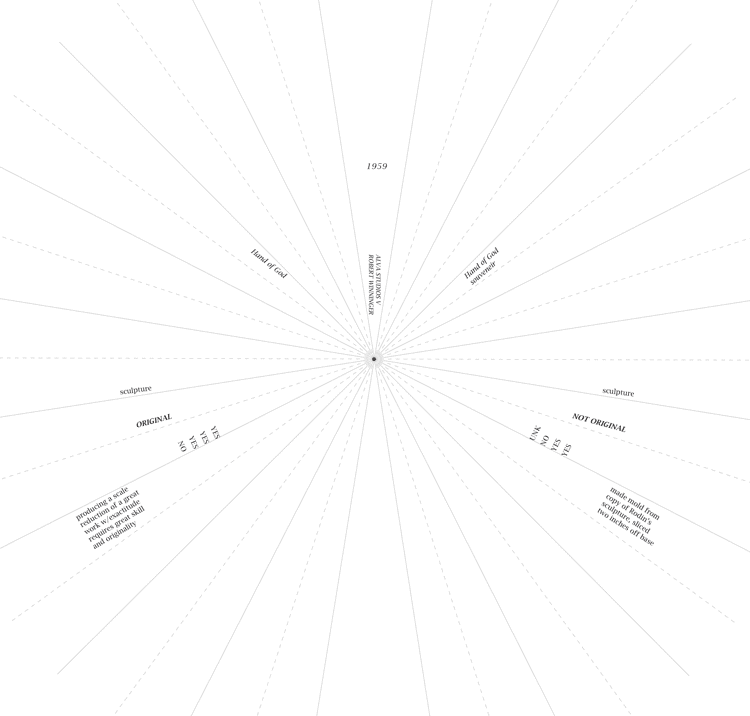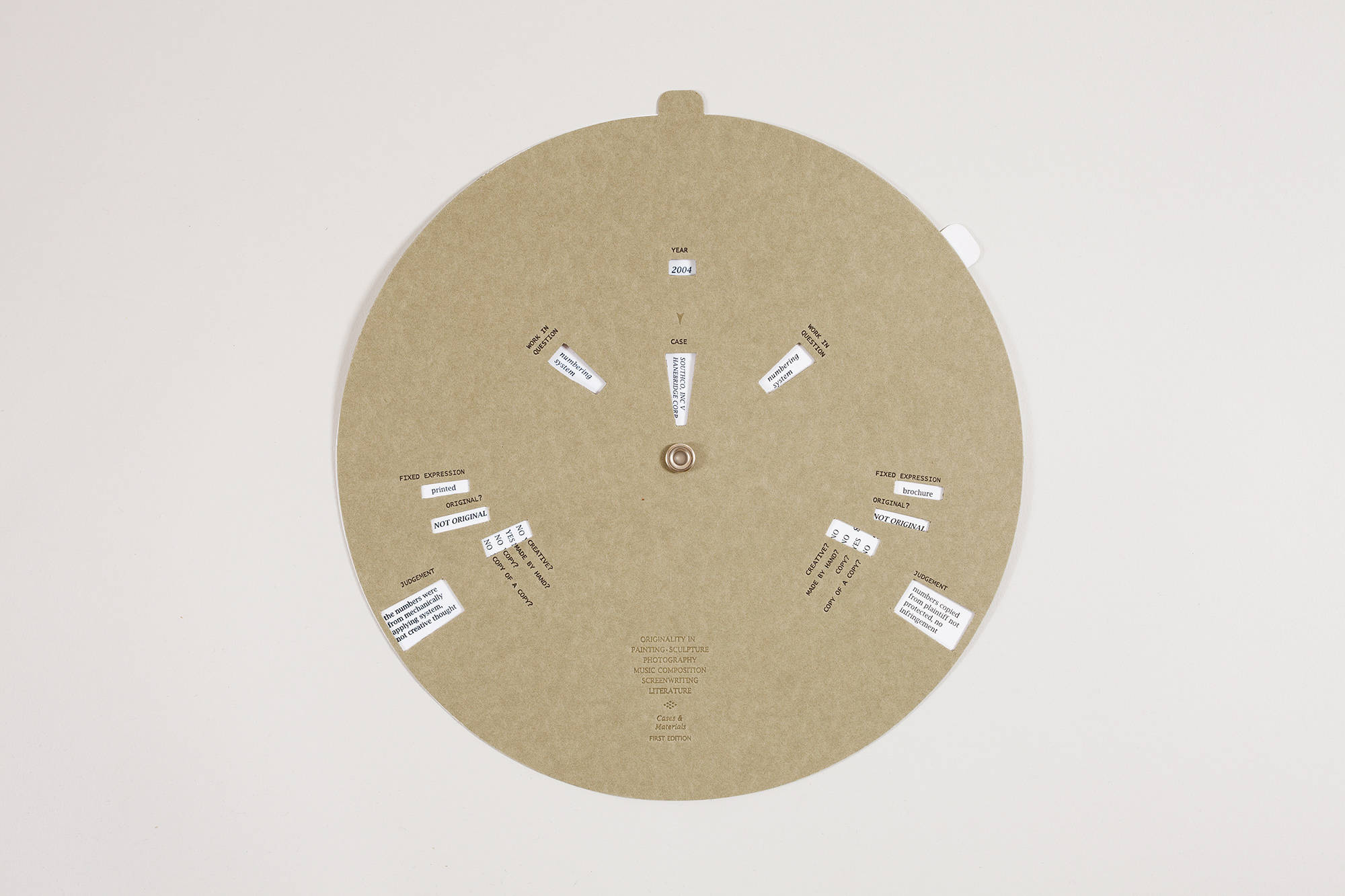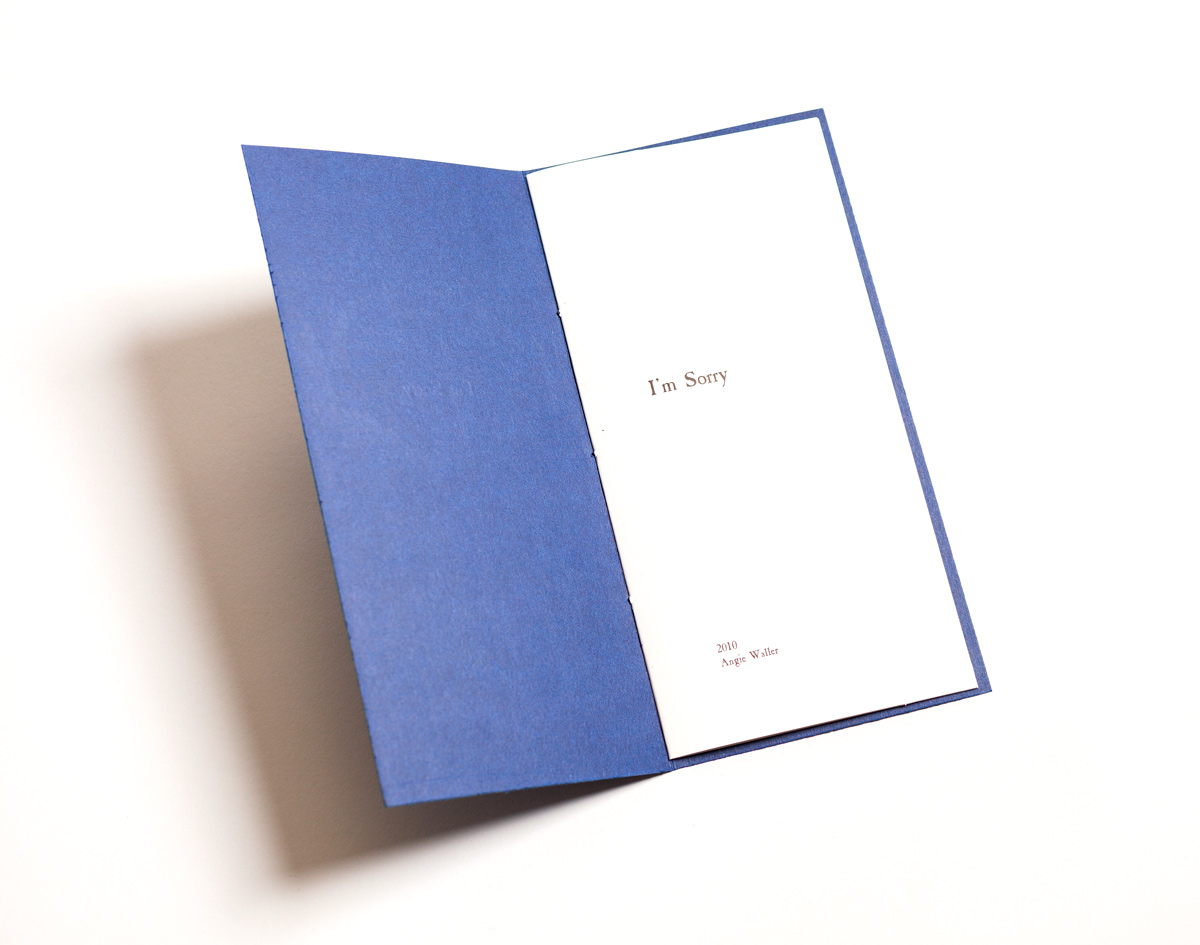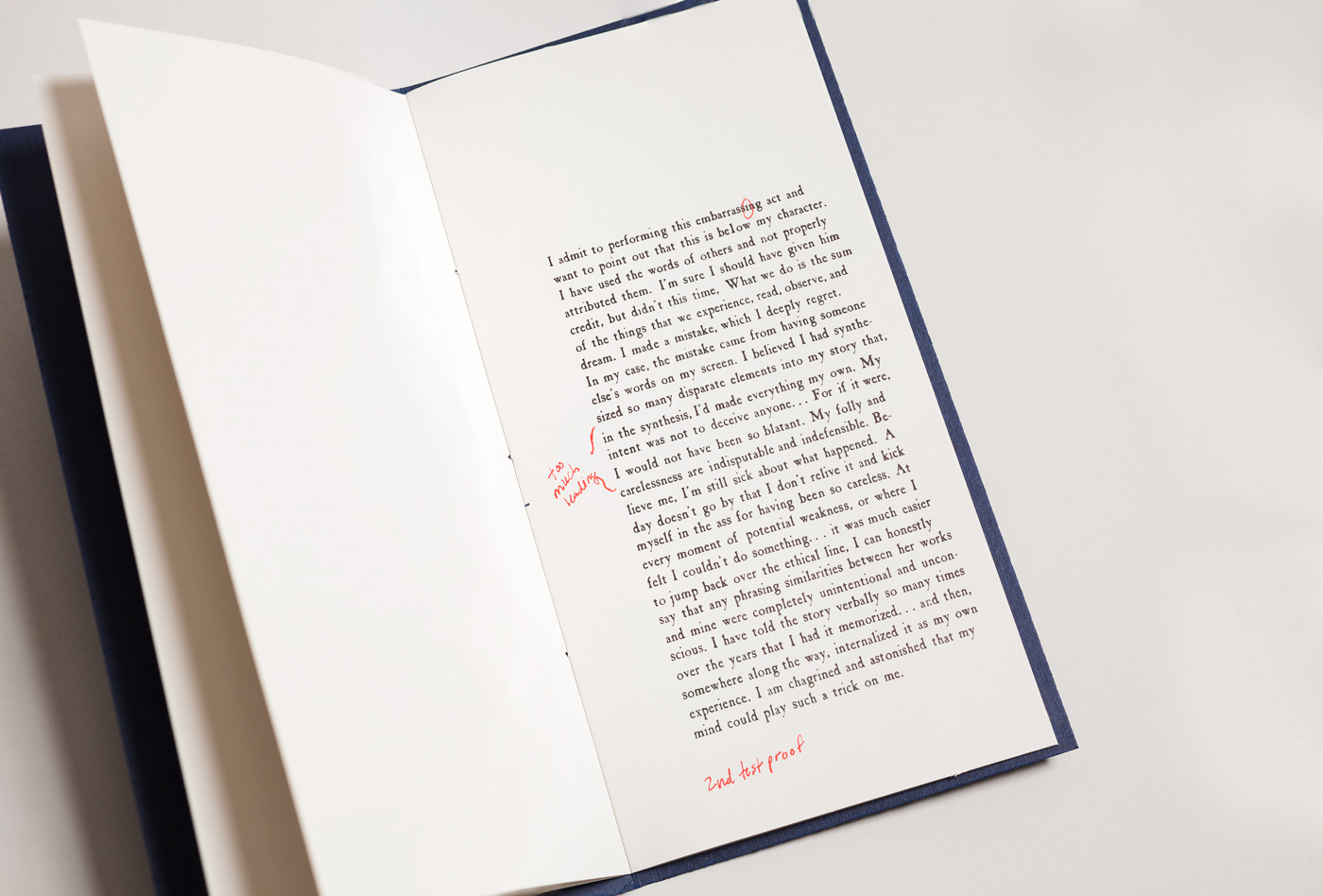art
Below is an archive of work completed from 2000-2015.
In addition to art book publishing, my interdisciplinary work traverses video and interactive formats.
Below is an archive of work completed from 2000-2015.



| title | How to Look at Artist Networks |
| Published | 2015 |
| support | 2015 commission of New Radio and Performing Arts, Inc. for its Turbulence.org website made possible with funds from the Jerome Foundation. |
| DATA | Google Knowledge Graph |
More than 60,280 artists' names and their connections were extracted from Google Knowledge Graph's "also searched" feature. Each artist node is categorized based on the number of steps it takes to connect to either Duchamp or Picasso.1
These connections often represent artists with similar styles and mediums, but they can also include the artist's social networks, collectors, romantic relationships, and even individuals with similar names (for example, a search for Leonardo da Vinci suggests Leonardo diCaprio as a related figure). The resulting lists curate artists not solely based on their work, but on their online relevance.
1. The artist Chris Burden once said that all artists decide to be more like a Picasso or a Duchamp.

| title | You Don’t Need a Weatherman |
| Published | 2013 |
| source material | Alex B. Long, The Freewheelin’ Judiciary: A Bob Dylan Anthology, 38 Fordham Urb. L.J. 1363 (2012) |
In his paper "The Freewheelin' Judiciary: A Bob Dylan Anthology," Alex B. Long discusses how Bob Dylan's lyrics are cited in court hearings.
This chart specifically examines citations for Dylan's "Subterranean Homesick Blues," particularly the couplet: "You don't need a weatherman to know which way the wind blows." The diagram, titled "You Don’t Need a Weatherman," illustrates twenty cases that reference these lyrics and the context in which they were used. The lines and connections are designed in a weather forecast style to illustrate how art was used as legal precedent.



| title | Originality Volvelle |
| Published | 2010 |
| Dimensions | 9.75” diameter |
| purchase | please inquire |
| source | copyright case law |
| see also | https://www.thebeliever.net/esoteric-concepts-in-copyright-laws/ |
By analyzing court decisions according to these specific elements, the cases were organized on a volvelle, which is a wheel chart similar to a color wheel. This volvelle enables fresh interpretations of intellectual property debates and reveals contradictions between similar cases. For example, in one case, a designer was found guilty of infringement for copying a dog mannequin, while in another case, copying a human mannequin was not considered a copyright violation. Through such examples, the volvelle highlights the ambiguities in defining originality.


| title | I’m Sorry |
| Published | 2010 |
| purchase | please inquire |
| source | text from apologies for plagiarism |
| edition | edition of 35 |
Each page represents a pass on the antique press, intentionally including errors that are inherent to the hand-set type process. These errors may include physically damaged type or type set upside-down and backwards. The progression of pages documents the gradual correction of printing errors. By emphasizing the physical properties of words created with lead type, the book challenges the copy-and-paste digital environment where plagiarism often occurs. The repeated text throughout the booklet pages serves as a tangible representation of the theme of exposure to others' ideas, and explores the fine line between influence, appropriation, and outright theft.